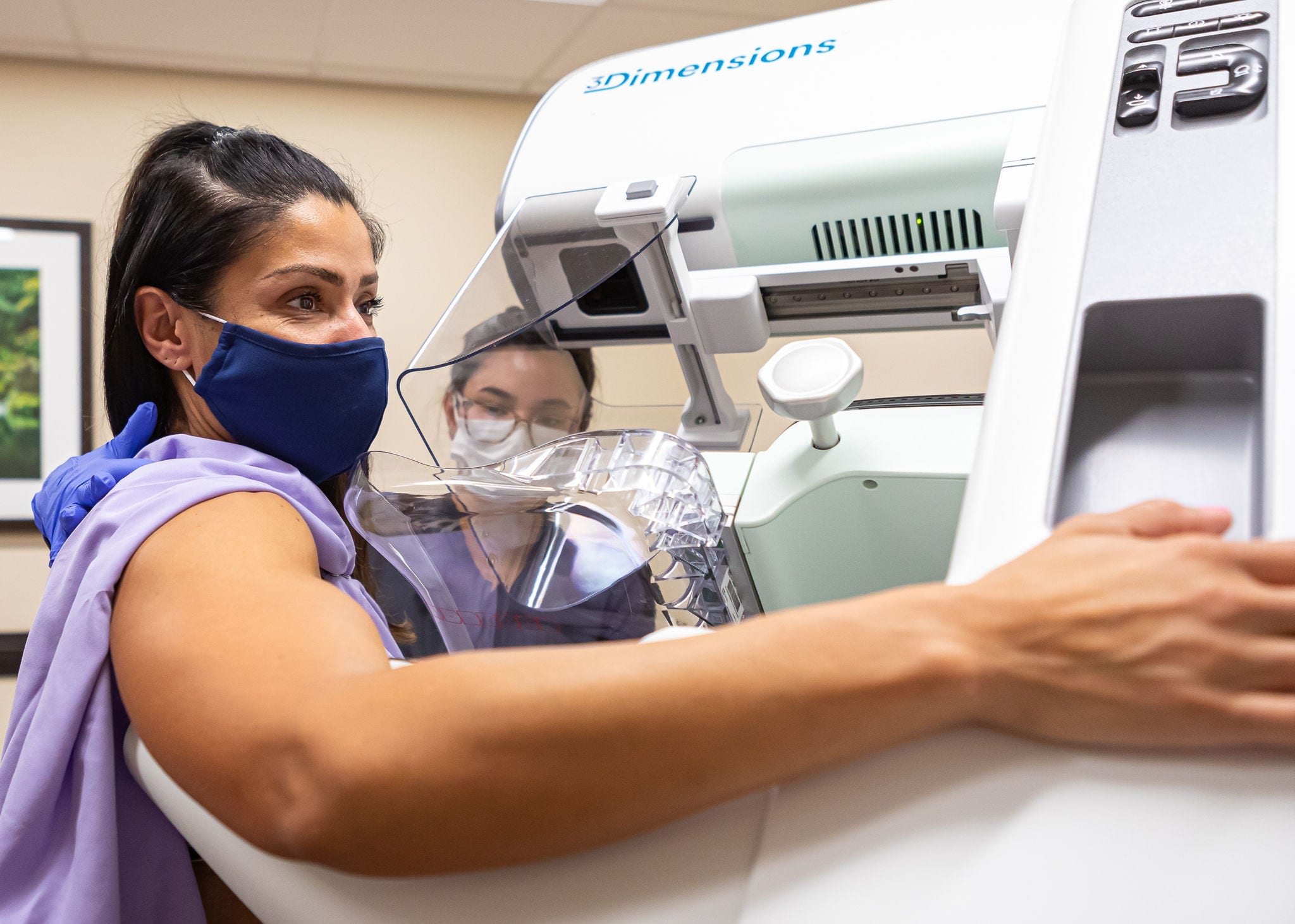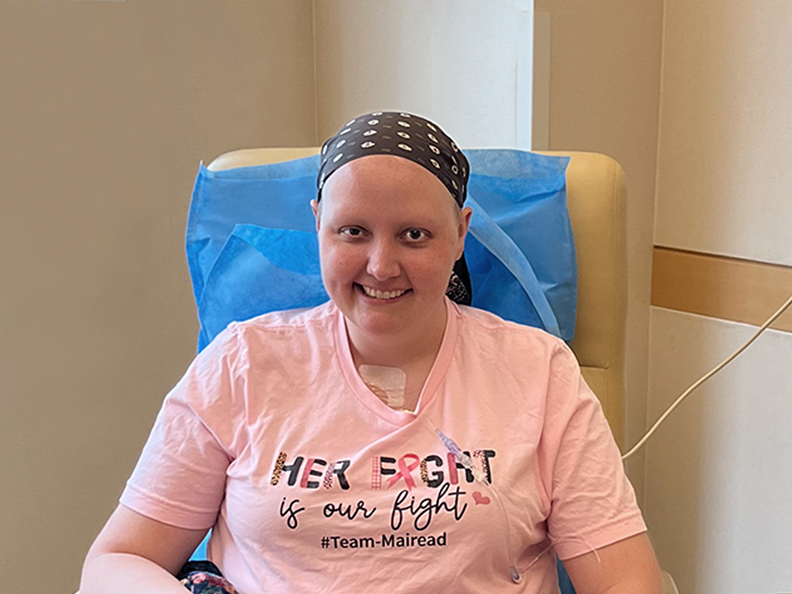Your gift is 100% tax deductible
Screening Mammograms Increase After Declines During the COVID-19 Pandemic
During the COVID-19 pandemic, breast cancer screening fell, and after, it rose—by 2023, screening levels were higher than before the pandemic.

Credit: UChicago Medicine
The Challenge
Screening for cancer saves lives. From 1975 to 2020 in the United States, 4.75 million deaths from breast, cervical, colorectal, lung, and prostate cancer were averted because of cancer prevention and screening efforts.
In 2020 and 2021 during the COVID-19 pandemic and the quarantines that occurred, the prevalence of many cancer screenings declined because people were just not able to schedule or get to those appointments—or they had lost health insurance due to job closings.
As a result, our nation lost the protection that screening offers—finding cancer early, when it is most likely to be treatable. As the numbers of people who got screened decreased, so did early diagnoses, which meant that in many cases cancers that could be screened for weren’t being caught until they were at a later stage—when they are less likely to be cured.
Glossary for Nonscientists
Featured Term:
Screening prevalence
The proportion of people in a population who receive cancer screening during a defined time period. Screening prevalence is often expressed as a percentage.
With breast cancer, for instance, being diagnosed when the cancer is at an early stage (before it’s spread outside the breast), reduces the risk of dying from breast cancer and increases treatment options. With early-stage breast cancer, the relative survival rate is 99%, which means that females diagnosed with breast cancer when it is still localized to the breast are 99% as likely to be alive 5 years after their diagnosis (or start of treatment) compared to females the same age and race who don’t have cancer.
When breast cancer is diagnosed at a late stage (distant stage), however, the relative survival rate is 32%. That means females diagnosed with late-stage breast cancer are 32% as likely to be alive 5 years after their diagnosis compared to females the same age and race who don't have cancer.
This is why it’s essential that we track screening prevalence, the risks that result if the numbers decline, and what worked or didn’t work to get screening prevalence back to the levels they were—or better than—before the pandemic. In fact, it can truly be a matter of life and death.
Breast Cancer Screening Guidelines
Screening for breast cancer requires a mammogram.
These guidelines are for a female with an average risk of developing breast cancer. Talk with your doctor about the screening schedule that's best for you.
ACS Guidelines
- Females between 40 and 44 may start getting a mammorgram every year.
- Females 45 to 54 should get mammograms every year.
- Females 55 and older may get a mammogram every other year, or they can continue getting one every year.
Learn more about breast cancer screening.
US Preventive Services Task Force (USPSTF) Guidelines
Starting at age 40 and continuing through age 74, all females should get screened for breast cancer every other year.
The Research
From the start of the COVID-19 pandemic, American Cancer Society (ACS) Surveillance, Prevention, & Health Services Research (SPHeRe) researchers have analyzed how the prevalence of cancer screening changed during the pandemic. The team has published studies every year, starting from the time when data became available in 2021.
Findings from two studies published in the 2025 peer-reviewed journal Cancer Epidemiology, Biomarkers, & Prevention (CEBP) provide a 6-year picture of breast cancer screening prevalence before the COVID-19 pandemic (2018-2019), during it (2020-2022), and after it (2023).
Before and During the Pandemic: Breast Cancer Screening Prevalence for Females 50 to 74
During the COVID-19 pandemic, there was a significant drop in up-to-date breast cancer screening through 2022. This was one of the key findings shared in a Jan. 2025 CEBP study from the ACS Cancer Risk Factors & Screening Research (RFSR) program within the Surveillance, Prevention, & Health Services Research (SPHeRe) team. The senior author was Scientific Director of the RFSR program, Priti Bandi, PhD, with RFSR Associate Scientist II, Jessica Star, MA, MPH, as a co-author.
The researchers used 2018 to 2022 data from the nationwide state-level telephone survey from the Center for Disease Control and Prevention’s Behavioral Risk Factor Surveillance System (BRFSS). BRFSS completes more than 400,000 interviews with adults across all 50 states in the United States, Washington DC, and 3 US territories. It’s the largest continuously conducted health survey system in the world.
This was the first study to show COVID-19-pandemic-related declines in breast cancer screening in screening-eligible females in the US in 2022, demonstrating declines in the first 2 years of the pandemic.
For females 50 to 74, the boxes below show how breast cancer up-to-date screening prevalence compared from before the COVID-19 pandemic in 2018 and during the first 2 years, 2020 and 2022.
During the pandemic, the steepest declines in up-to-date screening prevalence were seen in females who were:
- American Indian or Alaska Native People (AI/AN)
- In the lowest income bracket (less than $25,000 a year)
- Not high school graduates
- Without health insurance
- Living in the western part of the US
- Without access to their usual provider of health care
"Declines among these groups may be largely indicative of complex, socially driven systems of power, privilege, neglect, and oppression," wrote the authors. And theses complex systems typically contribute to disparities in cancer screening and treatment. The social disruption caused by the COVID-19 pandemic further worsened these differences.
Future studies, the authors say, should examine the association between up-to-date cancer screening and cancer stage at diagnosis to show whether we can expect that declines in screening will result in higher rates of advanced-stage diagnoses, reduced quality of life, and premature death.
After the Pandemic: Breast Cancer Screening Prevalence for Females 50 to 74
In 2023, screening mammography prevalence rebounded and even exceeded the prepandemic levels. This is one of the key findings shared in a June 2025 CEBP study from the ACS RFSR program on the SPHeRe team. The lead author was Dr. Bandi, with cowriters and RFSR Associate Scientists, Jessica Star, MPH, and Natalia Mazzitelli, MPH. ACS Senior Vice President of SPHeRe, Ahmedin Jemal, DVM, PhD, was the senior author of this study.
The researchers used 2019 to 2023 data about breast cancer screening from the National Health Interview Survey (NHIS), a nationally representative, in-person household survey of noninstitutionalized adults.
The study authors tracked data for years 2019, 2021, and 2023. They found that after the drop in up-to-date screening from 2019 to 2021 (76.4% to 75.9% respectively), in 2023, screening in females 50 to 74 increased to 79.9%—rising above prepandemic levels of 76.4% in 2019.
All facts below are for females 50 to 74, for 2023, unless otherwise noted.
Prevalence of Screening Mammograms Within the Last 2 Years by Race and Ethnicity
Prevalence of Screening Mammograms Within the Last 2 Years by Education Level
Prevalence of Screening Mammograms Within the Past 2 Years by Health Insurance Type
Prevalence of Screening Mammograms Within the Past 2 Years by Immigration Status
Prevalence of Screening Mammograms Within the Past 2 Years by Sexual Orientation
Estimated prevalence for bisexual females were statistically unstable.
Why It Matters
These findings reinforce the importance of making strong return-to-screening campaigns after a disruption. Designs for effective campaigns must include screening recommendations from physicians and other health care providers because research has shown that reminders from providers greatly improve the success of screening campaigns.
Even with gains in screening prevalence after the COVID-19 pandemic, the prevalence for all types of cancer screenings continue to be low, especially for people with health insurance barriers, lower income, and certain racial groups.
To address these disparities, the ACS study authors suggest that the US federal and state governments and policy makers use these system-level and educational interventions that have been shown to improve screening prevalence and reduce screening disparities:
- Maintain the Affordable Care Act (ACA) provisions for screening coverage without any cost to the patient (no cost-sharing)
- Keep health care navigation programs to guide patients through the screening continuum
- Continue ongoing surveillance with reliable ways to represent a variety of populations and national-, state-, and local-level datasets to track progress and develop interventions.



